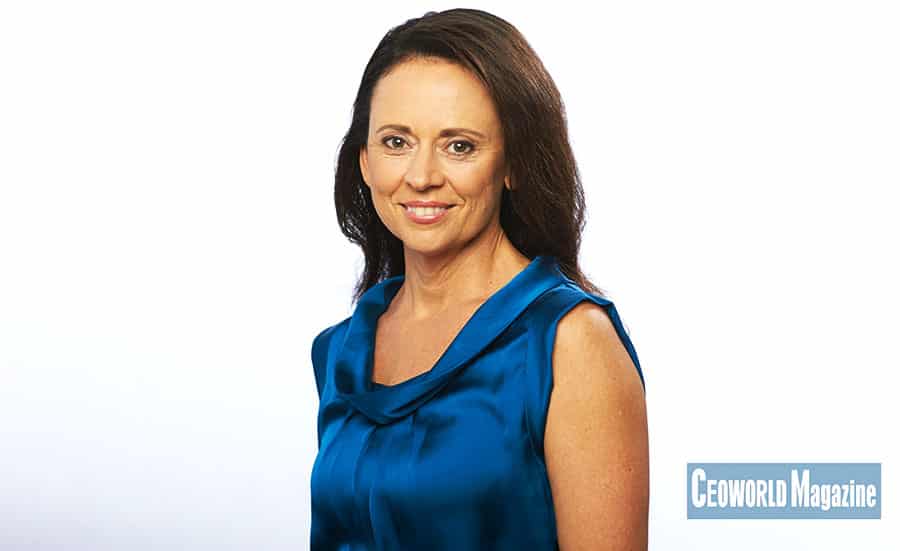Three things only the c-suite can do to lead a high-performance culture

In simple terms, a high-performance organisation is one that can perform at a very high level in the game it’s playing. The game an organisation is playing is the fulfilment of its mission and the pursuit of its vision. All this means is that a high-performance organisation does well at what it says it wants to do well at. But high-performance is not something many organisations can prove.
According to authors Jeffrey Pfeffer and Robert I. Sutton in their book Hard Facts, Dangerous Half-Truths and Total Nonsense:
“Business decisions, as many of our colleagues in business and your own experience can attest, are frequently based on hope or fear, what others seem to be doing, what senior leaders have done and believe has worked in the past, and their dearly held ideologies — in short, on lots of things other than the facts.”
Evidence-based leadership is not a mainstream practice. So for high-performance to be possible for an organisation, its c-suite executives must practice evidence-based leadership.
Evidence-based leadership
When we are practising evidence-based leadership, we are:
- using objective evidence to design and monitor the organisation’s strategy
- inspiring and encouraging and expecting evidence-based management from everyone in the organisation
- making it easier for them to practise it and apply it to what matters most
Evidence-based leadership is how we navigate and steer our organisations through a world that is somewhere between the extremes of perfect predictability and perfect unpredictability. C-suite executives are responsible for the direction and the culture of an organisation, and the culture of high performance will come only when they both practise and inspire evidence-based management.
There are three evidence-based leadership habits of high performance that only c-suite executives can do. No-one else in the organisation can do them. And they must master these habits. They must personally practise them, and by practising them routinely they become role models for their organisations. These habits are called Direction, Evidence and Execution.
Habit 1: Direction
Direction is about articulating a well-designed strategy that is results-oriented, understandable to everyone, and ruthlessly prioritised. Leaders of high-performance organisations will:
- Write strategic goals that are results-oriented, not action-oriented (action comes later).
- Clearly articulate the strategic goals in language everyone will understand (they can’t buy into what they don’t understand).
- Ruthlessly prioritise the strategic goals to focus on performance results that matter most, right now (the more goals you have, the fewer you’ll achieve).
Habit 2: Evidence
Evidence is about setting meaningful performance measures for each strategic goal that are quantitative, aligned to what matters and focused on improvement. Leaders of high-performance organisations will:
- Use evidence to learn like a scientist learns, without judgement.
- Design measures as quantifications of the observable results of their strategic direction.
- Only measure what can be aligned to the priorities: mission, vision and strategic goals.
Habit 3: Execution
Execution is about implementing the corporate strategy and achieving the strategic goals using the leverage found in the continuous improvement of business processes. Leaders of high-performance organisations will:
- Implement or execute strategy based on working smarter, not harder.
- Make strategy execution about removing and managing variability, not about hitting the numbers.
- Execute strategy to improve business processes and how work is designed, not to control people and what work is done.
There are no short cuts
The people in an organisation will not practise evidence-based management without it being deliberately led from the top. What the c-suite talks about and does, the rest of the organisation talks about and does. Evidence-based leaders routinely talk about:
- the purpose of the organisation
- the evidence that the purpose is being fulfilled
- what that evidence says about how well that’s happening.
There are no short cuts. If we want high-performance organisations, we have to be evidence-based leaders, every single day.
Have you read?
Ten Countries Where Both Facebook And Twitter Are Losing Active Users
Managing Conflict Between Generations
These Are The 12 Major Emerging Technologies In Need Of Better Governance
Infographics: All You Need to Know About Freehold Properties
Written by: Stacey Barr, one of the world’s leading specialists in organisational performance measurement and KPIs.
Bring the best of the CEOWORLD magazine's global journalism to audiences in the United States and around the world. - Add CEOWORLD magazine to your Google News feed.
Follow CEOWORLD magazine headlines on: Google News, LinkedIn, Twitter, and Facebook.
Copyright 2025 The CEOWORLD magazine. All rights reserved. This material (and any extract from it) must not be copied, redistributed or placed on any website, without CEOWORLD magazine' prior written consent. For media queries, please contact: info@ceoworld.biz








